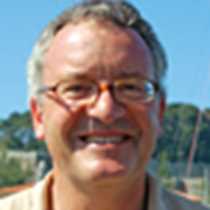Stockholm, Sweden
Stockholm is one of the most attractive capital cities in Europe, a city built on fourteen islands, with shimmering waterways ever present and blessed with parks and open skies. Our berth at the quayside of Gamla Stan, the historic old town whose narrow streets many of us had explored the previous evening, could not be bettered. Close by was the royal palace, where the daily changing of the guard is a popular attraction for visitors to the city.
The spire of the Storkyrkan, the Royal Cathedral of Sweden rises above the river frontage; those who went inside on the walking tour were able to view the life-sized sculpture of St George and the Dragon, an artistic treasure dating from the late-fifteenth century.
The object of our morning excursion was to visit one of the world’s great museums, opened in 1990, to house the Vasa ship which sank within minutes of being launched in 1628, a lasting metaphor for the hubris of Sweden’s great power status in the seventeenth century that met its nemesis at Poldova in the Ukraine less than a century later. Perfectly preserved in the brackish waters of the Baltic, the ship was lovingly excavated and restored through the fifties and sixties of the last century and never fails to astonish in its dramatic new museum setting.
The museum provides remarkable insights into the lives of seventeenth century sailors from a host of artifacts, from carpenter’s tools to the batterie de cuisine of the ship’s galley. The entire experience is a tribute to the vision and skills of the Swedish marine archaeologists who dedicated themselves to the project over so many years.
We concluded the morning with a visit to the City Hall, designed in art nouveau style by Ragnar Ostberg. Our tour included visits to the red brick and green marble Blue Hall where the Nobel peace prize ceremony takes place, Alfred Nobel, ironically perhaps, having made his fortune from the manufacture of dynamite. We later drove past his former home.
The Prince’s Gallery had frescoes designed by a member of the Swedish royal family, Prince Eugene, and the dazzling Gold Hall had mosaics of a Swedish hall of fame, not to mention the Eiffel Tower, the Empire State Building and the Statue of Liberty.
Skansen, one of the optional afternoon visits, is Sweden in miniature. It was the world’s first open-air folk museum when it opened in 1891 and has been widely imitated. In a large area of parkland close to the city centre, historic buildings representing various regional styles of vernacular architecture from different epochs have been re-erected. It’s a living museum too, with demonstrations of rural crafts once commonplace but increasingly under threat of neglect or extinction. Rare breeds of farm animals from different parts of Sweden are also displayed.
Our day ended in true Swedish style with a smorgasbord, the first course being a season one: crayfish, accompanied with aquavit and vocal accompaniment. Bibs and party hats made for a festive occasion.




